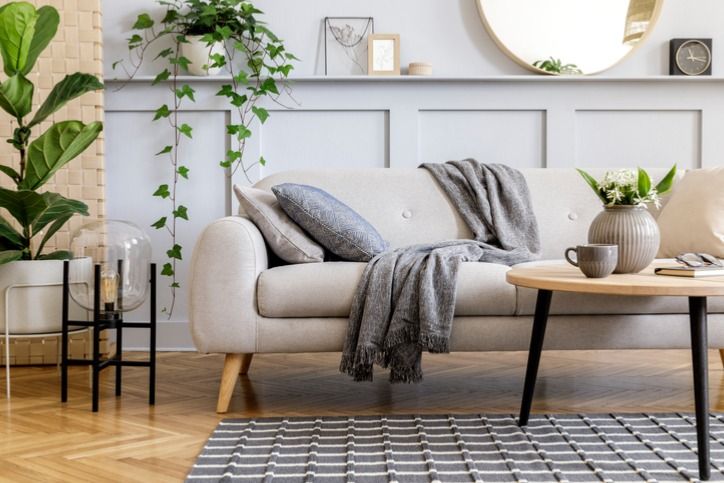
Why Thoughtful Design Matters for Apartment Living
The look and feel of your home quietly shape your mood every day. While apartment dwellers are sometimes limited by their building’s rules or their unit’s footprint, the magic lies in using thoughtful design to connect with your space on a deeper level. Intentionally chosen décor and intentional layouts do more than just look good—they can improve focus, soothe stress, and turn daily routines into moments of joy. As highlighted in evidence-based design research, details like natural lighting, soothing colors, and tactile materials can measurably influence well-being, especially in smaller or urban apartments.
Many people find inspiration by observing how residents of luxury apartments in Pilsen Chicago combine thoughtful layouts with inviting accents. Softly layered area rugs add comfort underfoot, art collections become conversation starters, and modular furniture adapts to evolving lifestyles. The real reward is customizing your dwelling to suit your personal rhythms: a sunny reading corner, a bold kitchen backsplash, or cozy lounge lighting can all make a rental unit feel like a true, intentional home. It’s more about capturing your lifestyle and less about chasing passing décor trends.
How to Personalize Your Space Without Renovating
Making an apartment feel like it truly belongs to you doesn’t require expensive remodels or permanent changes. Thoughtful, adaptable details can inject personality, create comfort, and spark joy whenever you walk through the door. Start with pieces that matter, whether a shelf for your favorite books, a display wall of cherished photos, or even a bold rug that instantly lifts the mood. Decorative bowls for keys, a stack of artfully chosen coffee table books, or a hand-knotted runner in the entry allow your apartment to tell your story.
- Gallery walls: Mix art, candid snapshots, postcards, or handmade crafts for a custom look that can be rearranged as you evolve.
- Layered textiles: Drape throws and scatter plush pillows across beds, moveable benches, and sofas to soften, warm, and add bursts of color.
- Removable décor: Try peel-and-stick backsplashes in the kitchen or patterned decals in the bath. These make bold statements yet peel off easily when it’s time to move or redecorate.
Additionally, rearranging furnishings, trying a seasonal color palette, or adding scent with diffusers helps renew your emotional connection to your space. Taking time to stamp your unique character on your apartment signals that this environment is safe, restorative, and joyful, supporting your confidence and sense of belonging.
Maximizing Functionality in Small Spaces
Small apartments offer big opportunities for creativity. Every piece of furniture, container, or shelf deserves a purpose. By making deliberate choices, residents can maximize both physical and visual space, resulting in rooms that never feel cramped or chaotic. Multifunctional furniture—like expandable tables, sofa beds, or ottomans with hidden storage—can transform a space from day to night without sacrificing style.
It helps to think vertically: tall, slim bookshelves, wall-mounted bike racks, and hooks for hats or bags use untapped height and keep essential items accessible. Consider the power of the “one-in, one-out” philosophy to prevent clutter buildup. Storage baskets and bins in closets or under sinks store everything from linens to holiday decorations. Even bathrooms can benefit from tiered shelving, over-the-toilet cabinets, and compact organizers for daily essentials.
- Over-the-door shoe caddies or kitchen organizers provide extra stashing spots for everything from sneakers to cookware.
- Bed risers and under-bed rolling storage are perfect for seldom-used items or off-season attire.
- Collapsible hampers or baskets help maintain order in small laundry rooms or entryways.
Streamlining living areas with smart storage eliminates clutter, reduces visual chaos, and makes cleaning and settling in easier at the end of a busy day.
Bringing the Outdoors In
Homes that reflect nature’s rhythm tend to feel calmer and more inviting. In cities where green spaces are prized, bringing nature indoors bridges the gap between the concrete jungle and the serenity of the outdoors. Plants like pothos, peace lilies, or snake plants thrive in varying light, require minimal care, and purify the air, making them a favorite for busy residents. A window herb garden can inspire your cooking and keep healthy ingredients nearby.
Well-placed greenery—whether a vine across a bookshelf or a statement fiddle leaf fig by the sofa—adds freshness and vibrancy that lifts the spirit. If brown thumbs run in your family, faux plants or bouquets refreshed at the farmer’s market can still deliver a sense of life and color. Even those with limited light can experiment with creative options such as air plants or shade-tolerant species. Inspiration from the New York Times guide to cozy spaces reveals that even a modest collection of greenery can soften sharp lines, break up sterile spaces, and create a peaceful, restorative retreat.
Lighting Your Apartment for Comfort and Mood
Few things shape a home’s energy as much as lighting. Thanks to layered light sources, an apartment that lacks windows or is shaded much of the day can still feel vibrant and cozy. Start by maximizing natural light—keep windows uncluttered, and choose sheer curtains to diffuse sunshine for a warm, uplifting glow.
- Ambient lighting: Evenly illuminate rooms with ceiling fixtures, pendant lamps, or an arc floor lamp for a soft overall radiance.
- Task lighting: Reading lamps, swing-arm lights, or under-cabinet options make workspaces and kitchens functional and safe.
- Accent lighting: Add whimsy with string lights, candles in lanterns, LED strips, or even salt lamps to set the mood for relaxation or entertaining.
Consider dimmers for a customizable ambiance, and opt for warm-hued bulbs to sidestep harsh, institutional tones. With a little attention, lighting can accent architectural details, highlight artwork, and ensure your home feels inviting every day.
Creating Zones for Work, Play, and Rest
Apartments frequently play multiple roles: workspace, gym, dining room, and relaxation zone. Establishing zones within a single open area brings order and clarity, letting you easily shift between “work mode” and “relax mode.” Visually separate spaces with rugs or modular shelving, position a small desk or table against a quiet wall for productivity or set up a reading chair in a sun-drenched nook for unwinding.
- Rugs and furniture placement gently segment zones without blocking light or mixing up activity areas.
- Plants, screens, or open-backed bookcases can be attractive, flexible dividers between functions.
- Draw privacy curtains or install portable screens to tuck away “work” at the end of the day, protecting rest and personal time.
These subtle organizational cues help keep life balanced and allow you to mentally “close the office door” and decompress at home.
Building Community Within Your Apartment Complex
A sense of community can make all the difference in apartment living. Getting to know neighbors, joining communal events, or offering help when someone moves in changes the building from a collection of strangers into a supportive network. Organize a hallway coffee morning, participate in an online building group, or plan a regular swap event for books, games, or gently used household items.
Many apartment complexes now feature amenities like rooftop lounges, resident gyms, and shared gardens—all intentionally designed to foster engagement. Studies show that those who regularly interact with neighbors enjoy greater happiness, stress relief, and home security. By sharing resources and kindness, even the most impersonal high-rise can buzz with camaraderie, turning neighbors into friends and your floor into a vibrant community.
Integrating Wellness and Self-Care Routines at Home
Making room—and time—for your personal well-being enriches life in any housing situation. Dedicate a nook for meditation, set out a yoga mat each morning, or transform a balcony with string lights and a comfy chair for evening unwinding. Place essential oils, candles, or favorite soundtracks nearby to foster further relaxation.
Small acts—limiting social media after sunset, setting boundaries with work, journaling, or enjoying creative hobbies—transform your apartment into a shelter and a sanctuary. With consistent, intentional self-care rituals, you support your inner calm and long-term resilience, making your space work for you at every stage of life.
Final Thoughts
Apartment living offers a blend of convenience, vibrancy, and the chance to infuse your environment with meaning, no matter its size or location. Through thoughtful design, creative use of space, nurturing connections with others, and mindful self-care, anyone can create a home that supports, soothes, and inspires. With a few strategic tweaks and a personal touch, your apartment can become a place you’re always delighted to return to—a true reflection of your best self.



